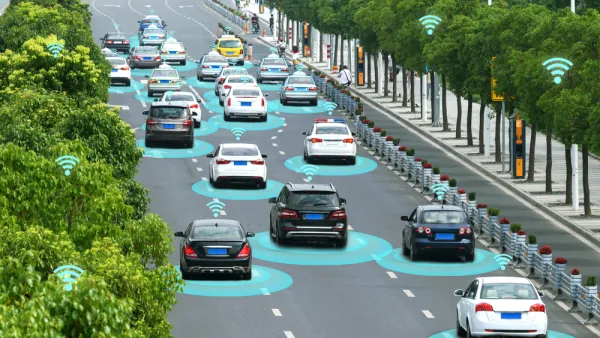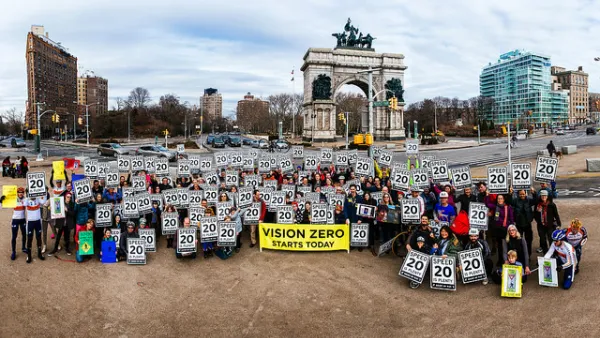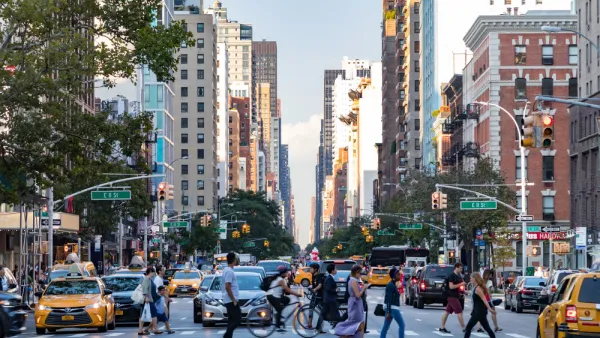The technology to make traffic enforcement obsolete is becoming available. But in the U.S. willing to use it?

A new document from the National Highway Traffic Safety Administration quietly asks the public its opinion on a radical change. In a new federal rule making on vehicle safety, it asks: should we explore requiring speed limiting technology in U.S. cars?
In the most tentative way, the agency is introducing a discussion about what will this year become law in the European Union: Intelligent Speed Assistance (ISA). ISA—or speed governors—is technology that automatically limits drivers to, or around, the posted speed limit using GPS technology (except in rare circumstances when it needs to be overridden for safety reasons).
As fantastical as it seems, it’s relatively uncontroversial in a lot of our peer nations. And road ready as well. In July, it will become mandatory on all new vehicles in Europe.
In the United States, where traffic deaths rates are many times that of Europe, federal regulators are signaling that adoption is a vaguely distant future possibility. (It’s proposed for consideration over a ten-year timetable.)
“Should NHTSA take into consideration systems, such as intelligent speed assist systems, which determine current speed limits and warn the driver or adjust the maximum traveling speed accordingly?” the agency asks tentatively, inviting feedback from the public.
Part of the reason for the hesitancy is certainly cultural. Speeding is such a taken-for-granted part of American driving—almost an entitlement. We seem to have forgotten how dangerous it is. But that doesn’t mean the bodies have stopped piling up.
According to the Centers for Disease Control (CDC), in an average year in the United States about 10,000 people are killed in speeding related crashes. And during the pandemic, thanks to a surge of reckless driving, it’s gotten worse. With fatality numbers up 19 percent over just two years, on a miles-driven basis.
There may be another contributing factor to increasing road carnage that is more thorny: A decline in traffic enforcement following the Black Lives Matter protests of last summer. Cities have ample reason to rethink traffic stops, which are frequently biased and often escalate into tragic and costly shootings.
But not enforcing dangerous driving seems to have its downside as well. Part of the explanation for rising road fatalities might be a side effect.
Which is why it’s disappointing there isn’t more enthusiasm from federal regulators right now about a technology that could replace traffic enforcement while tamping down bad behavior on the roads and the attending carnage.
The availability of ISA comes at opportune time. It’s not just speeding that could be all but eliminated technologically. An obscure passage in the Infrastructure Investment and Jobs Act will require, for the first time, automakers to install anti drunk driving technology standard in all new cars. These systems can detect when a driver is intoxicated and disable the vehicle. (Drunk driving causes about 10,000 deaths a year in the United States as well, the CDC estimates.)
Technology is also becoming available that uses the same sort of advanced technology to detect distraction and “nudge” drivers eyes back to the road and hands back to the steering wheel—similar to the “beep, beep, beep” system we’ve used to quietly self-enforce seat belt use.
It must be noted that none of this technology would solve the problem overnight. It takes about 11 years for the vehicle fleet in the United States to turn over—to replace all the old cars with new cars.
But if we had the will to install these life-saving technologies, we could start to see improvements immediately. And the 11-year replacement period would give us a chance to transition the million-some people whose job it is to enforce traffic rules into different roles.
In the past, the United States has been resistant—for political reasons—to using speed limiting technology, even in commercial trucks. But the time has come to rethink traffic enforcement and vehicle safety technology. The longer we wait, the farther we will fall behind and the more people will get killed.

National Parks Layoffs Will Cause Communities to Lose Billions
Thousands of essential park workers were laid off this week, just before the busy spring break season.

Retro-silient?: America’s First “Eco-burb,” The Woodlands Turns 50
A master-planned community north of Houston offers lessons on green infrastructure and resilient design, but falls short of its founder’s lofty affordability and walkability goals.

Delivering for America Plan Will Downgrade Mail Service in at Least 49.5 Percent of Zip Codes
Republican and Democrat lawmakers criticize the plan for its disproportionate negative impact on rural communities.

Test News Post 1
This is a summary

Test News Headline 46
Test for the image on the front page.

Balancing Bombs and Butterflies: How the National Guard Protects a Rare Species
The National Guard at Fort Indiantown Gap uses GIS technology and land management strategies to balance military training with conservation efforts, ensuring the survival of the rare eastern regal fritillary butterfly.
Urban Design for Planners 1: Software Tools
This six-course series explores essential urban design concepts using open source software and equips planners with the tools they need to participate fully in the urban design process.
Planning for Universal Design
Learn the tools for implementing Universal Design in planning regulations.
EMC Planning Group, Inc.
Planetizen
Planetizen
Mpact (formerly Rail~Volution)
Great Falls Development Authority, Inc.
HUDs Office of Policy Development and Research
NYU Wagner Graduate School of Public Service





























